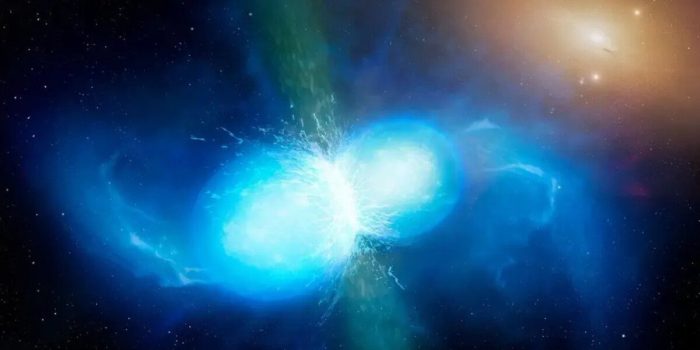In the vast expanse of the universe, a rare and deadly dance unfolds as two neutron stars collide in a cosmic phenomenon known as a “kilonova.” Out of the 100 billion stars in our galaxy, only about 10 pairs of neutron stars are projected to meet such a catastrophic fate. Although these occurrences are infrequent, they raise questions about the potential implications for life on Earth.
Scientists have observed only a handful of kilonova explosions, none of which have occurred within our Milky Way. However, a team of researchers, led by physicist Haille Perkins from the University of Illinois Urbana-Champaign, has delved into this question, shedding light on the consequences of a kilonova eruption. Their findings reveal that the most significant danger from a kilonova event comes from cosmic rays, specifically gamma-ray bursts, with perilous consequences if Earth is within a certain proximity.

Understanding the anatomy of neutron star collisions is vital to grasp the risks posed by kilonova events. These cosmic events result in short, intense bursts of gamma radiation, different from the longer bursts seen in supernovae. Gamma radiation emerges as narrow jets on both sides of the colliding stars, generating powerful X-ray afterglows. Over time, a bubble of cosmic rays emanates from the collision.
The researchers drew insights from the first-ever observed neutron star collision, GW170817, to determine how these phenomena could affect our planet. Their findings suggest that life within approximately 297 light-years of the gamma-ray jets would likely be overwhelmed by radiation. Beyond this range, the threat diminishes, and survival becomes more promising, with the danger receding after about 13 light-years.

The most formidable threat lies in a long-lasting bubble of cosmic rays emitted by the kilonova remnant. These relentless rays could strip Earth’s ozone layer, rendering it susceptible to prolonged radiation exposure lasting for thousands of years. A catastrophe of mass extinction proportions would only occur if Earth were within about 35 light-years from the source.
While kilonova events pose potential dangers, Earth’s more immediate cosmic threats are nearer to home, including solar flares, asteroid impacts, and supernovae. These events take precedence as immediate concerns.
“The rarity of binary neutron star mergers combined with a small range of lethality means that they are probably not important threats to life on Earth,” the team noted.
“However, even if it never induced a mass extinction, a nearby kilonova event would be visible on Earth … and remain bright in the sky for over a month.”


